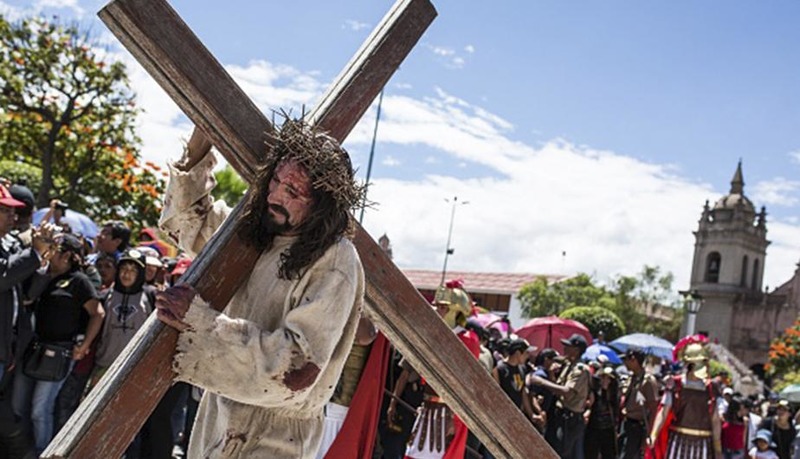 Easter in Spain is one of the most significant and large-scale religious holidays, attracting the attention of tourists and locals due to its colourful processions and ancient traditions.
Easter in Spain is one of the most significant and large-scale religious holidays, attracting the attention of tourists and locals due to its colourful processions and ancient traditions.
When is Easter in Spain in 2025?
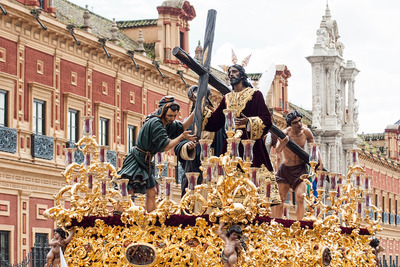 Easter in Spain, or Semana Santa, in 2025 will begin on 13 April, Palm Sunday, and will last throughout Holy Week until the Resurrection of Christ, which falls on 20 April. These dates are important for believers because they mark the end of Lent and begin with events described in the Bible.
Easter in Spain, or Semana Santa, in 2025 will begin on 13 April, Palm Sunday, and will last throughout Holy Week until the Resurrection of Christ, which falls on 20 April. These dates are important for believers because they mark the end of Lent and begin with events described in the Bible.
Traditions and customs of celebrating Easter in Spain
Celebrations begin on Palm Sunday and end on Easter Sunday.
Palm Sunday - Domingo de Ramos
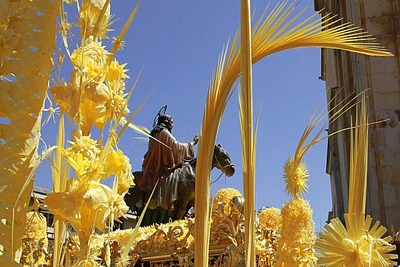 Palm Sunday in 2025 is celebrated on 13 April and marks the beginning of Holy Week in Spain. This day symbolises Jesus' triumphal entry into Jerusalem. It is customary for churches to consecrate and distribute palm or olive branches, symbolising those that the crowds threw under Jesus' feet. Believers often take the blessed branches home to place next to Christian man-made objects such as crosses and crucifixes, or to keep in bibles and religious books.
Palm Sunday in 2025 is celebrated on 13 April and marks the beginning of Holy Week in Spain. This day symbolises Jesus' triumphal entry into Jerusalem. It is customary for churches to consecrate and distribute palm or olive branches, symbolising those that the crowds threw under Jesus' feet. Believers often take the blessed branches home to place next to Christian man-made objects such as crosses and crucifixes, or to keep in bibles and religious books.
Maundy Thursday - Jueves Santo
On Maundy Thursday, which falls this year, 2025, on 17 April, we commemorate Jesus' last meal with the apostles and the washing of feet. This day marks the beginning of the Easter Triduum, the period of Jesus' passion, death and resurrection.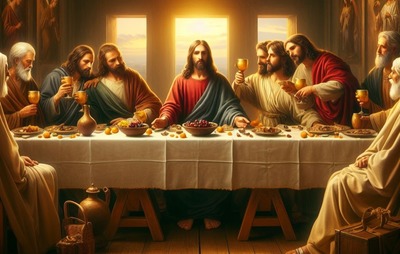
Although Maundy Thursday is not an official holiday in Spain, it is celebrated in most regions except Catalonia and the Valencian Region.
Processions are held throughout the country on this day. In Málaga, for example, the statue of Christ of the Good Death, known as Christos Menas (Saint Christ of the Good Death, patron and protector of the Spanish Legion), is moved, accompanied by military bands.
In Madrid, among other processions, the Gran Poder and the Brotherhood of Macarena are particularly notable, as well as the procession of Jesús Nazareno de Medinaceli, which gathers many people and passes through the most iconic places such as Puerta del Sol and Paseo del Prado.
Good Friday - Viernes Santo
Good Friday is a day off in Spain. It is a significant event in the Christian world, dedicated to reflecting on the life and works of Jesus Christ, remembering his crucifixion and death. In the Catholic tradition, this day is dedicated to repentance: believers fast and abstain from eating meat.
Easter Sunday - Domingo de Resurrección
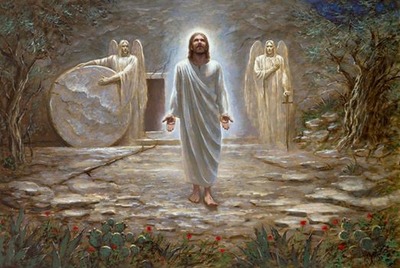 Easter Sunday in Spain is a special day. All believers celebrate the return of Jesus to life. This great event has become the foundation of the Christian faith, being a source of hope and joy for millions of people.
Easter Sunday in Spain is a special day. All believers celebrate the return of Jesus to life. This great event has become the foundation of the Christian faith, being a source of hope and joy for millions of people.
Bright Monday - Lunes de Pascua
Despite the fact that Bright Monday is not considered an official holiday, many autonomous communities still celebrate it as a public holiday. For example, Catalonia, Valencia, the Balearic Islands, Navarra, the Basque Country, La Rioja and Cantabria will be on holiday on Monday 21 April. It is customary to spend Bright Monday with family or friends, having picnics in nature or just walking together.
Features of Easter celebrations in Spain
Processions and Brotherhoods
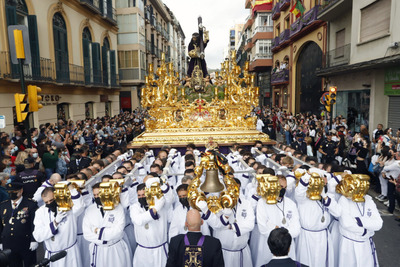 One of the most remarkable features of Easter in Spain are the magnificent processions that pass through the streets of towns and villages. These processions are organised by local religious fraternities, which have their own unique style and traditions in each town. The processions in Seville and Málaga are particularly famous for their scale and attract tourists from all over the world. Processionists in traditional costumes carry sculptures depicting scenes from Holy Week, at the same time creating an atmosphere of deep religiosity and solemnity.
One of the most remarkable features of Easter in Spain are the magnificent processions that pass through the streets of towns and villages. These processions are organised by local religious fraternities, which have their own unique style and traditions in each town. The processions in Seville and Málaga are particularly famous for their scale and attract tourists from all over the world. Processionists in traditional costumes carry sculptures depicting scenes from Holy Week, at the same time creating an atmosphere of deep religiosity and solemnity.
Festive Easter meals
Easter in Spain is not only a time for religious observance, but also opportunities to savour the local cuisine.
An integral part of the Easter meal is the ‘bacalao’ - delicious cod, which is prepared in a variety of ways, from baking to stewing with vegetables.
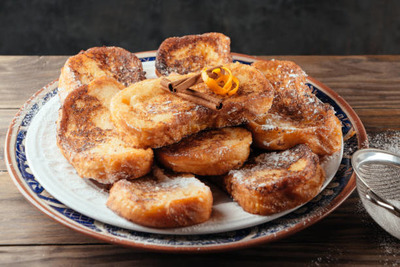 Also, one of the most popular treats is ‘torrijas’ - sweet toasts made from bread soaked in milk and egg, fried until golden and sprinkled with cinnamon and sugar. In some regions they are made with wine or honey.
Also, one of the most popular treats is ‘torrijas’ - sweet toasts made from bread soaked in milk and egg, fried until golden and sprinkled with cinnamon and sugar. In some regions they are made with wine or honey.
For dessert, they often serve ‘mona de Pascua’, a sweet round cake decorated with eggs and figures symbolising the joy of spring.
Art and culture
During Easter in Spain there are often concerts of classical and religious music, as well as theatre productions on biblical themes. Painting and sculpture also feature prominently, especially in the form of bas-reliefs and frescoes, which can be seen in many Spanish churches and monasteries.
Religious rites and services Each day of Holy Week is accompanied by religious services and rituals where the faithful can participate in masses and prayers. It is a time of deep spiritual reflection and penance for many Spaniards.


 English
English  Español
Español  Русский
Русский